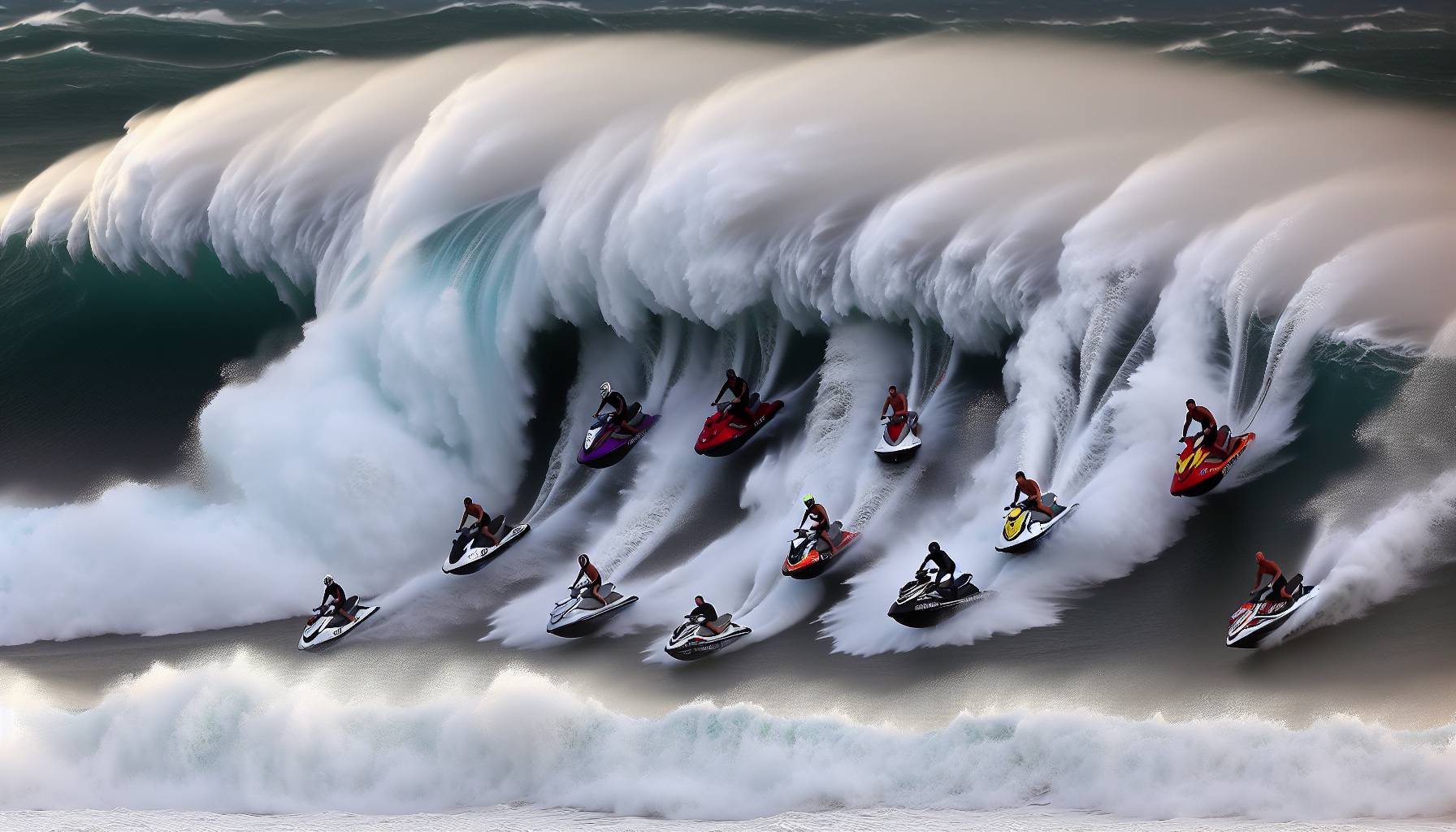
High surf advisory details
The National Weather Service (NWS) in Newport/Morehead City, NC, has issued a high surf advisory, warning of hazardous coastal conditions. The advisory was announced at 4:12 a.m. on Tuesday and is set to take effect from 5 a.m. Wednesday, remaining in place until 5 a.m. Thursday.
During this period, large breaking waves are expected to reach heights of 2 to 3 metres, creating dangerous conditions for swimmers, surfers, and boaters. Strong rip currents and powerful shore breaks may pose significant risks, particularly for inexperienced surfers and those unfamiliar with the local conditions.
Authorities caution that the combination of high surf and strong currents could lead to beach erosion and minor coastal flooding in low-lying areas. Residents and visitors are advised to stay informed and take necessary precautions when venturing near the water.
Affected locations
The high surf advisory affects several key coastal areas, including West Carteret, East Carteret, Coastal Onslow, Ocracoke Island, and Hatteras Island. These locations are known for their popular surf spots and scenic shorelines, attracting both local and visiting surfers throughout the year.
West Carteret and East Carteret encompass a mix of open beaches and inlets, where shifting sandbars can create unpredictable wave patterns. Coastal Onslow, home to well-known surf breaks, is expected to experience strong shore breaks and heightened rip current activity. Surfers in these areas should be particularly cautious, as the changing conditions may make it difficult to navigate the waves safely.
Ocracoke Island, a remote and less developed surf destination, is also under the advisory. The island’s exposure to open ocean swells means that wave heights could be particularly intense, making it a challenging spot for even experienced surfers. Similarly, Hatteras Island, a renowned surf location along the Outer Banks, is expected to see powerful surf conditions. The combination of strong winds and large waves could lead to dangerous situations, especially near piers and jetties.
Local authorities urge beachgoers and surfers to remain vigilant and check for updates on surf conditions before heading out. While these areas often provide excellent waves, the current advisory signals a period of heightened risk that should not be underestimated.
Safety precautions
With the high surf advisory in effect, it is crucial for surfers, swimmers, and beachgoers to take necessary precautions to ensure their safety. The combination of large waves, strong rip currents, and powerful shore breaks can create hazardous conditions, particularly for those unfamiliar with the area or inexperienced in handling rough surf.
Surfers should assess conditions carefully before entering the water. Even experienced surfers should be mindful of the increased wave energy and potential for sudden changes in surf patterns. It is advisable to surf with a buddy and stay within designated areas where lifeguards are present. Wearing a leash is essential to prevent losing your board in turbulent waters, and using a board suited for high-energy waves can improve control and stability.
Rip currents are a major concern during high surf advisories. If caught in a rip current, it is important to remain calm and avoid swimming directly against it. Instead, swim parallel to the shore until out of the current’s pull, then make your way back to the beach at an angle. Those unfamiliar with rip currents should avoid venturing too far from shore and always keep an eye on changing water conditions.
Beachgoers should also exercise caution when walking near the shoreline. Powerful shore breaks can knock individuals off their feet, leading to potential injuries. Parents should closely supervise children and keep them away from the water’s edge, as sudden waves can be stronger than they appear. Additionally, standing on rocks or jetties can be extremely dangerous, as waves may unexpectedly surge over these structures.
Authorities recommend checking local surf reports and weather updates before heading to the beach. If conditions appear too dangerous, it is best to postpone water activities until the advisory is lifted. Emergency services may have limited response times in rough surf conditions, so taking proactive safety measures is essential.
For those who are unsure about the risks, consulting with local surf shops or lifeguards can provide valuable insights into the safest spots to surf or swim during the advisory period. Respecting the power of the ocean and making informed decisions will help ensure a safe and enjoyable experience despite the challenging conditions.
High surf advisory details
Alright, legends, listen up! The National Weather Service (NWS) in Newport/Morehead City, NC, has thrown down a high surf advisory, and it’s not one to take lightly. This bad boy kicks in at 5 a.m. Wednesday and rolls through until 5 a.m. Thursday. That means a full 24 hours of serious swell action.
Issued at 4:12 a.m. Tuesday, this advisory is all about powerful waves and gnarly conditions. Expect dangerous shore breaks and some seriously strong rip currents. If you’re thinking about paddling out, make sure you know what you’re in for—this isn’t your average day at the beach.
“If you’re not an experienced surfer or swimmer, best to stay on the sand and enjoy the show,”
For the fishos out there, this means tricky conditions off the rocks and beaches. If you’re casting a line, keep an eye on those rogue waves—no one wants an unexpected swim with their bait.
Bottom line? The ocean’s flexing its muscles, so respect it. Whether you’re chasing barrels or just soaking in the salt air, stay sharp and stay safe.
Affected areas and timing
Alright, here’s where the action is going down. This advisory covers some prime coastal spots, so if you’re in West Carteret, East Carteret, Coastal Onslow, Ocracoke Island, or Hatteras Island, you’ll want to keep your eyes on the horizon.
The swell starts cranking from 5 a.m. Wednesday and won’t back off until 5 a.m. Thursday. That’s a full day of heavy surf, so whether you’re chasing waves or just watching from the dunes, expect some serious ocean energy.
For the surfers, this could mean some epic rides—if you know what you’re doing. But if you’re not used to handling big, unpredictable surf, maybe sit this one out and let the pros have at it. No shame in watching from the shore with a meat pie in hand.
Fishos, you’ll need to be extra careful. Those rock ledges and beaches will be copping a pounding, and one rogue wave could send you swimming. If you’re keen to wet a line, pick your spot wisely and don’t turn your back on the sea.
Bottom line? If you’re in these areas, expect wild conditions. Whether you’re paddling out, casting a line, or just soaking in the salty air, keep your wits about you. The ocean’s putting on a show—just make sure you’re not the main act.

